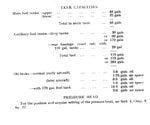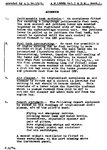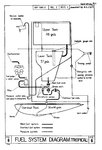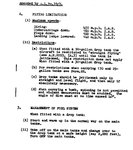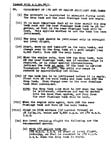I read it in an article on building a long range spitfire (which I cant find now). I don't think there was any actual maximum quoted, I suspect there would be a table because there were several different types of tanks on many different types of plane and also it would change with how full the tank is.Any idea what the maximum speed for dropping them was?
Navigation
Install the app
How to install the app on iOS
Follow along with the video below to see how to install our site as a web app on your home screen.
Note: This feature may not be available in some browsers.
More options
You are using an out of date browser. It may not display this or other websites correctly.
You should upgrade or use an alternative browser.
You should upgrade or use an alternative browser.
A Critical Analysis of the RAF Air Superiority Campaign in India, Burma and Malaya in 1941-45
- Thread starter Kevin J
- Start date
Ad: This forum contains affiliate links to products on Amazon and eBay. More information in Terms and rules
More options
Who Replied?- Thread starter
- #22
Kevin J
Banned
I've just found a 300 mph safe top speed when tested with drop tanks. With a 30 gal slipper tank you lose about 5 mph in top speed, whereas with 90 gals you lose about 10% of your speed so you slow down to the speed of a Hurricane. It doesn't sound very healthy to me flying in a straight and level line over enemy territory waiting to be bounced and unable to do much about it fast. The 30 gal slipper tank I like. I've never seen anything about Seafire IIc's with either 45 or 90 gal tanks, just the 30 gal ones and as for the Seafire III's they used Kittyhawk drop tanks.I read it in an article on building a long range spitfire (which I cant find now). I don't think there was any actual maximum quoted, I suspect there would be a table because there were several different types of tanks on many different types of plane and also it would change with how full the tank is.
- Thread starter
- #23
Kevin J
Banned
SpitefulI read it in an article on building a long range spitfire (which I cant find now). I don't think there was any actual maximum quoted, I suspect there would be a table because there were several different types of tanks on many different types of plane and also it would change with how full the tank is.
Scroll down to post #49. The 45 gal slipper tank is best used for defensive patrols only. The 90/170 gal tanks for one way ferry missions. IIRC you can leave the 30 gal tank on in combat.
Last edited:
fubar57
General
Seafires aboard HMS Indefatigable. Caption says. "....894 NAS equipped with 90-gallon slipper tanks...aren't as reliable as 89-gallon P-40 tank...The 90-gallon tanks gave the Seafire an escort and strike capability in the last few months of the war...."

I thought I read it here but cant find it....lots of useful info though.Spiteful
Scroll down to post #49. The 45 gal slipper tank is best used for defensive patrols only. The 90/170 gal tanks for one way ferry missions.
Escort Spitfire - a missed opportunity for longer reach? - Royal Aeronautical Society
- Thread starter
- #26
Kevin J
Banned
Yes, I've seen that too, but why extend the Spitfire's range when you have Mustangs for the long range escort mission. Of course, when the war switches to the Far East, you're going to need to get every mile you can out of the ETO/MTO Spitfires that you redeploy there. So, I guess that's why they left those tests so late. Anyway, lets get back to my original thoughts, that the Hurricane is the right fighter for India in 1942/43. It is rugged, it has longer range with drop tanks, and it can be field mod'ed so that it can take on the Hayabusa. The Spitfire would be nice to intercept Ki-46's but neither the radar coverage nor the ground based observer corps are effective so even with Spitfires you're unlikely to intercept them. For counter air operations you have the Beaufighter which at full throttle can outrun the Ki-43 and like the Hurricane it is rugged as well as exceptionally long ranged. They're the best British fighters for the tasks in hand.I thought I read it here but cant find it....lots of useful info though.
Escort Spitfire - a missed opportunity for longer reach? - Royal Aeronautical Society
MIflyer
1st Lieutenant
I have the Spit V Pilot's Notes. In fact I have the maintenance manual. Appropriate pages attached.
Attachments
parsifal
Colonel
Seafires aboard HMS Indefatigable. Caption says. "....894 NAS equipped with 90-gallon slipper tanks...aren't as reliable as 89-gallon P-40 tank...The 90-gallon tanks gave the Seafire an escort and strike capability in the last few months of the war...."
The US pattern tanks used by the BPF were scrounged from RAAF stocks Ive read. The RAAF apparently had oodles of the US tanks for their P-40s. Fitters aboard ship managed the conversion in less than a day and the results were immediate. The RAF pattern slippers were so unreliable they could not be risked in combat. Nothing worse than basically having a fuel bomb strapped to your butt, probably leaking fuel and wrecking the a/c performance, whilst mixing it with enemies as dangerous as the Oscar.
fubar57
General
The Spitfire would be nice to intercept Ki-46's but neither the radar coverage nor the ground based observer corps are effective so even with Spitfires you're unlikely to intercept them.
Nov. '43
MIflyer
1st Lieutenant
Looking at the Spitfire V manual pages I posed, I note that they say that drop tank pressurization is turned on only at higher altitudes and that pressurization tends to defeat the tanks' self-sealing feature.
As far as I know almost all US drop tanks were pressurized all the time via the vacuum pump exhaust and that was what drove the fuel out of the tank, the air pressure. That is the way it is done currently, using engine bleed air pressure. I had some urgent experience with the F-105 auxiliary tank system after one blew up while climbing out of Savannah. I had to stay up all night getting the Wild Weasels' aux tank pressure regulators fixed so they could deploy to Europe. Then the next day go to McConnell and put their 105's back in the air.
The Hurricane ferry tanks used pumps built into the tanks. It seems that the US system was simpler and worked much better.
As far as I know almost all US drop tanks were pressurized all the time via the vacuum pump exhaust and that was what drove the fuel out of the tank, the air pressure. That is the way it is done currently, using engine bleed air pressure. I had some urgent experience with the F-105 auxiliary tank system after one blew up while climbing out of Savannah. I had to stay up all night getting the Wild Weasels' aux tank pressure regulators fixed so they could deploy to Europe. Then the next day go to McConnell and put their 105's back in the air.
The Hurricane ferry tanks used pumps built into the tanks. It seems that the US system was simpler and worked much better.
Glider
Captain
Yes, and I have also read the equivalent papers in the National Archives analysing the air war in the far east done for the RAF. Two papers were produced one in I think late 1942 and a second one in 1944 and both were extensive. The first was full of assumptions and you can tell with hindsight was very inaccurate. The second was far more detailed looking into the lessons learnt and making recommendations for the way ahead including some unexpected (for me anyway) lessons/observations.The Dutch tested a Hurricane in the East Indies with half the armament and fuel and it was fully capable of dog fighting the Hayabusa. The Hurricane had problems with the Hayabusa when it couldn't get to sufficient altitude to combat it i.e. ineffective radar. The Spitfire did stop the Ki-46 overflights but only after the radar cover was up and running. Without effective radar it would not have been able to as the Vc TROP was slower than the Ki-46-II and had a lower rated altitude. Have you read the document attached?
In the second paper the Hurricane was clearly described as being obsolete and the main reason why it was kept in service was because it was exceptionally accurate as a dive bomber. Due to its unusually thick wing profile it didn't really 'mush' when pulling out of a dive it could drop delayed action bombs at a much lower altitude than other fighter bombers significantly increasing its accuracy. Air to air combat was very unusual at this time so its poor dogfighting abilities wasn't a real problem.
Other interesting titbits were the use of modified depth charges to clear the jungle cover from targets and the request from the USAAF for RAF rockets to be used on their P40's as they were far more effective against river traffic than the bazooka type rockets they had available. The effect of Napalm was also discussed.
Re the Dutch test it's worth remembering that the Hurricane IIa suffered just as badly at the hands of the Ki43 as any other and I find it hard to believe that a Hurricane II with 6 x LMG, would be very different than one with 8 x LMG
Re the speed any fighter would need radar assistance but clearly the Spitfire was fast enough because it did the job and had a severe impact on the Ki46 operations, A Hurricane which was slower in level speed and climb would never have had the same success.
- Thread starter
- #32
Kevin J
Banned
IIRC, the Hurricane suffered badly when it had insufficient warning of an incoming attack and failed to climb to altitude fast enough. Those occasions when it had sufficient warning or was already airborne, it did okay, not that this happened very often. Obsolete, definitely not, able to intercept a Ki-46, definitely not, but then until there is good radar cover and a decent observer corps, neither would a Spitfire.Yes, and I have also read the equivalent papers in the National Archives analysing the air war in the far east done for the RAF. Two papers were produced one in I think late 1942 and a second one in 1944 and both were extensive. The first was full of assumptions and you can tell with hindsight was very inaccurate. The second was far more detailed looking into the lessons learnt and making recommendations for the way ahead including some unexpected (for me anyway) lessons/observations.
In the second paper the Hurricane was clearly described as being obsolete and the main reason why it was kept in service was because it was exceptionally accurate as a dive bomber. Due to its unusually thick wing profile it didn't really 'mush' when pulling out of a dive it could drop delayed action bombs at a much lower altitude than other fighter bombers significantly increasing its accuracy. Air to air combat was very unusual at this time so its poor dogfighting abilities wasn't a real problem.
Other interesting titbits were the use of modified depth charges to clear the jungle cover from targets and the request from the USAAF for RAF rockets to be used on their P40's as they were far more effective against river traffic than the bazooka type rockets they had available. The effect of Napalm was also discussed.
Re the Dutch test it's worth remembering that the Hurricane IIa suffered just as badly at the hands of the Ki43 as any other and I find it hard to believe that a Hurricane II with 6 x LMG, would be very different than one with 8 x LMG
Re the speed any fighter would need radar assistance but clearly the Spitfire was fast enough because it did the job and had a severe impact on the Ki46 operations, A Hurricane which was slower in level speed and climb would never have had the same success.
- Thread starter
- #33
Kevin J
Banned
I'm just reading this document again. So if the Spitfire could gain 30 mph in speed then a Hurricane should gain almost as much, say 28 mph. Replace the triple exhausts with individual exhausts and you gain another 7 mph, so 35 mph in all. That would give a Hurricane IIb with twelve m/c guns a top speed of 375 mph less 5 mph if you fit the Aboukir tropical filter. So now you would have a Hurricane fast enough to intercept a Ki-46-II. Max dive speed is still a bit on the low side at 410 mph, so clearly the Hurricane isn't suitable for the ETO/MTO, but its adequate against the Ki-43-1. The Hurricane IV with the Merlin 24 could pull 450 mph in a dive, so base your new Hurricane on the Mk IV. You then end up with a Hurricane which although slightly slower in a dive than a Spitfire Vc would more than compensate for this with higher low altitude speeds as the Merlin 24 had 18 lbs of boost. It would combine the performance of the Spitfire LVc and Vc, be more rugged, so no more bent wings after combat. Arm it with twin 20 mm cannons and two 0.5 in m/c guns and you improve the firepower and manoeuvrability. That's what the Russians did to their Mk IIb's. The Spitfire VIII is of course much better.I thought I read it here but cant find it....lots of useful info though.
Escort Spitfire - a missed opportunity for longer reach? - Royal Aeronautical Society
Last edited:
MIflyer
1st Lieutenant
Many of the Hurricanes used in the CBI had two of their 20MM guns removed. Of course that probably was to help them when carrying bombs.
Shortround6
Major General
Operating in tropical conditions sapped both horsepower/thrust and lift.
Add in short (sometimes) crappy (mostly) airstrips and take-offs and landings needed a lot more room that temperate climates.
Add in short (sometimes) crappy (mostly) airstrips and take-offs and landings needed a lot more room that temperate climates.
- Thread starter
- #36
Kevin J
Banned
Never knew that.Many of the Hurricanes used in the CBI had two of their 20MM guns removed. Of course that probably was to help them when carrying bombs.
MIflyer
1st Lieutenant
Operating in tropical conditions sapped both horsepower/thrust and lift.
Add in short (sometimes) crappy (mostly) airstrips and take-offs and landings needed a lot more room that temperate climates.
A friend of mine, former maintenance chief of the 9th PRS in India in 1942-44, said that the Air Commandos found that the A-36A and P-51A could haul larger bomb loads out of those short crappy strips than could that big weightlifter, the P-47
Glider
Captain
I am afraid that everyone considered the Hurricane was obsolete by late 1944. If you can find any exceptions to this I would be interested because at the end of the day it's the view of the people on the ground at the time that counts.IIRC, the Hurricane suffered badly when it had insufficient warning of an incoming attack and failed to climb to altitude fast enough. Those occasions when it had sufficient warning or was already airborne, it did okay, not that this happened very often. Obsolete, definitely not, able to intercept a Ki-46, definitely not, but then until there is good radar cover and a decent observer corps, neither would a Spitfire.
- Thread starter
- #39
Kevin J
Banned
Who mentioned 1944? Not me, I'm talking about 1942/43 in the CBI.I am afraid that everyone considered the Hurricane was obsolete by late 1944. If you can find any exceptions to this I would be interested because at the end of the day it's the view of the people on the ground at the time that counts.
Glider
Captain
A Hurricane II and a Ki43 in 1942/3 is basically the same in 1944 so the case and argument standsWho mentioned 1944? Not me, I'm talking about 1942/43 in the CBI.
Users who are viewing this thread
Total: 1 (members: 0, guests: 1)

